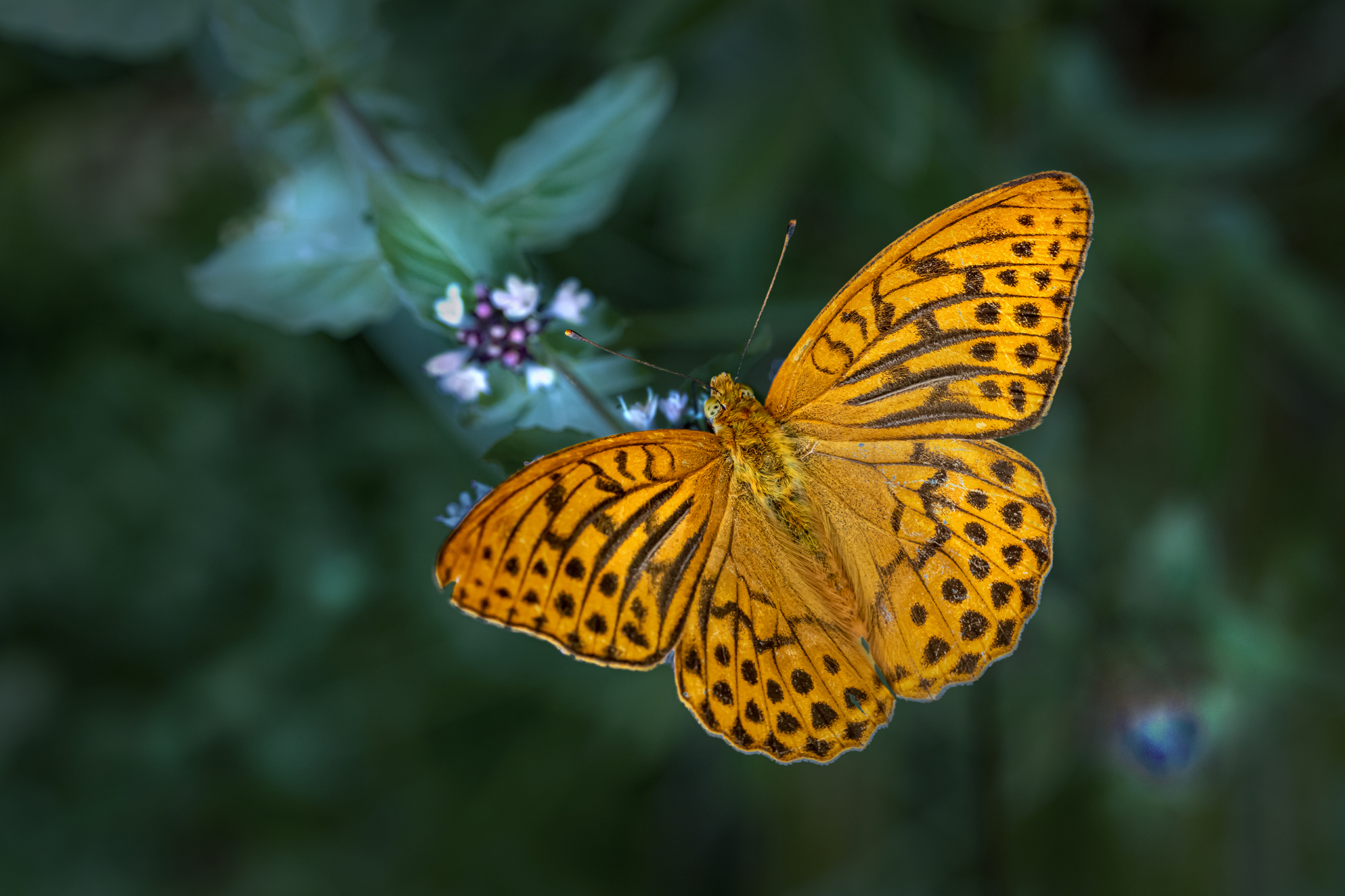The Silver-washed Fritillary (Argynnis paphia) is a striking butterfly species belonging to the Nymphalidae family. Here’s some information about this beautiful insect:
- Appearance: The Silver-washed Fritillary is a large butterfly with a wingspan ranging from 54 to 70 millimeters (2.1 to 2.8 inches). Its upper wings are bright orange with black markings and a row of silver spots near the edges, giving it its name. The undersides of its wings are more muted, with a combination of orange, brown, and silver markings.
- Habitat: Silver-washed Fritillaries inhabit a variety of woodland habitats, including broadleaf woodlands, forest edges, and glades. They are often found in sunny areas with abundant flowering plants, where they can feed on nectar and bask in the sun.
- Distribution: Silver-washed Fritillaries are widely distributed across Europe and parts of Asia. They can be found in temperate regions from the British Isles in the west to Japan in the east. They are particularly common in central and southern Europe but may also occur in northern regions during the summer months.
- Lifecycle: The lifecycle of the Silver-washed Fritillary consists of four stages: egg, larva (caterpillar), pupa (chrysalis), and adult butterfly. Female butterflies lay eggs on the leaves of violets (Viola spp.), which serve as the larval host plants. The caterpillars feed on these leaves before pupating and emerging as adult butterflies.
- Diet: Adult Silver-washed Fritillaries primarily feed on the nectar of a wide range of flowering plants, including thistles, brambles, and knapweeds. They have a long proboscis that allows them to access the nectar from deep flowers. Caterpillars feed on the leaves of violets, which are abundant in woodland habitats.
- Behavior: Silver-washed Fritillaries are strong and agile flyers, often gliding gracefully through the forest canopy. Males can be territorial and may engage in aerial displays to defend their territory and attract mates. They are also known to engage in mud-puddling behavior, where they gather on damp soil to extract minerals and salts.
- Conservation: While the Silver-washed Fritillary is not considered globally threatened, populations may be declining in some regions due to habitat loss, fragmentation, and changes in land use. Conservation efforts aimed at preserving and restoring woodland habitats, maintaining populations of larval host plants, and reducing pesticide use can help support this species and other woodland butterflies.
Overall, the Silver-washed Fritillary is a striking and charismatic butterfly species that adds beauty and vibrancy to woodland ecosystems across its range.
Visited 270 times, 12 visit(s) today
Views: 1034
Subscribe to the newsletter:
